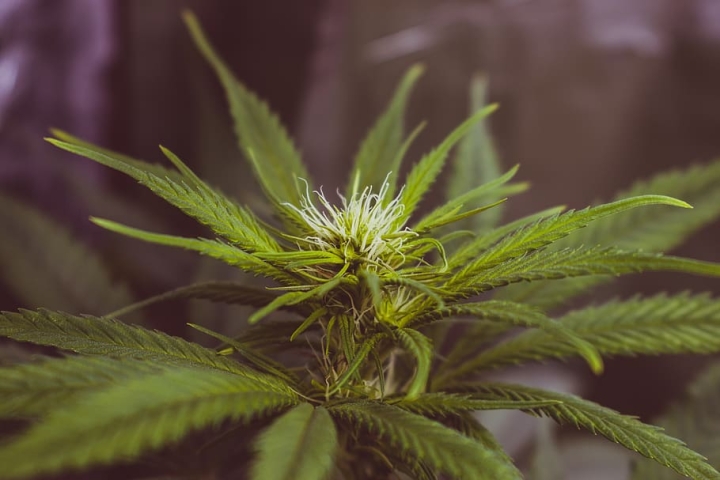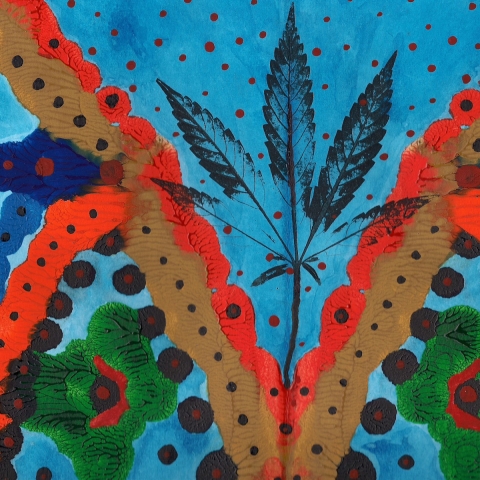Calamus: Mysterious Hallucinogenic
People like to try new things, not only to become wiser, smarter or better, but sometimes just for the experience itself. Sometimes you do something you've never done before, while others have preceded you countless times. For example, I have never caught a fish before, to name but one example.
It's the same with drugs: you're doing something for the first time, while others have known it for a long time. Thanks to the Internet, the world of experiences is at our feet, and all we have to do is find out what such an experience is all about with the help of a few search terms. A warned person counts for two! Sometimes you discover something new you've never heard of before. Below I tell you about my first experience with Calamus, a very interesting plant I didn't know anything about in those days. Also at that time I didn't know anyone who had tried it, so I didn't have a single example of effects I could expect. Always make sure you get your material from a reliable source so you know what you're taking.
The forgotten knowledge of the plant kingdom
When I walked into a Smartshop for the first time, I was soon drawn to the herbs and plants section. So many things I had never heard of before and had no idea what you could do with them. My curiosity was naturally aroused and I decided it was time for a new experience. My attention was drawn to ‘Calamus’. The salesman told me that this plant had interesting properties that had long been used by Indian tribes in North America. "Is it a bit like Peyote? I asked eagerly. It was totally different than Peyote, but Calamus could be counted as a hallucinogen, according to certain sources. Also the ancient Egyptians would use this plant to balance their personal energy and mood. I was very curious when I bought the bag and opened it at home. As a tip I was given not to use the plant with other means, in order to experience the pure effect.
Sirius Trip Report: Acorus Calamus
The sachet contains a finely ground powder. It has a very typical smell that I can't bring home very well. A sweetish aroma that I consider pleasant but also a bit strange. On the packaging I read that you can mix 1 or 2 teaspoons with, for example, yoghurt or a drink. In the fridge I still have some fruit yoghurt and I decide to mix two large teaspoons through it. For the rest I only had a light breakfast that day, so in a few bites the mixture is gone. I have just enough time to realise the taste is pretty disgusting. Strawberry taste and Calamus don't go well together in my opinion. Now I have to wait for the effect.
After about three quarters of an hour I start to notice something. Although the effect is very subtle, my senses are more sharpened and my mind is clear. My thoughts are clear, as if my mental capacity has arranged itself very neatly. A desire to go outside and take a walk overwhelms me. I put on my shoes and walk naturally towards the forest. Here I enjoy little things that strike me: the beautiful rustling of the leaves, the wind playing with my hair, the smell of the moss. A very peaceful feeling descends over me like a blanket.
After this nice walk I arrive home and let the subtle effects of Calamus develop further. After some small creative chores (making a drawing and cleaning up my wardrobe) I feel the remarkable brightness I experience in my head slowly dissolve. In total, the effect lasted about two hours, after which the after-effects of the peaceful feeling persisted a bit.
Visual LSD Trip
To say now that I've had an intense new experience is going too far. Because I had no expectations for the experience and just let it come to me, I was actually pleasantly surprised by the serene effect the plant had on me. I did wonder what Calamus could still be used for and if I could experience other effects as well. I was curious why Indians in North America use the plant and if you can actually hallucinate from it.
According to some sources, the Cree-Indians in North America (Northwest Canada) used the plant as a hallucinogen. It should be mentioned that it is the American Calamus root (Acorus americana, resembles Acorus Calamus in almost all respects). They chewed on large quantities of the plant's root and would get an LSD-like experience with many visual effects. Although not much is known about it, it has been researched that the active ingredients of the plant mainly come from the substances a-asarone and b-asarone. In terms of chemical structure, these substances are similar to mescaline! So still a link with Peyote.
Victory thanks to Calamus
There is a story known that tells how General Custor is defeated in Little Big Horn, thanks to Calamus. According to the source, certain Indians had to walk more than a hundred miles a day, chased by their American pursuers who wanted to kill them. The flight went to Canada. Day after day they kept walking, with their wives and children. The U.S. Army reportedly couldn't keep up with them and arrived far too late, when the Indians defeated General Custor and his bloodthirsty Indians Assassins upon arrival. According to this source, about 25 cm of Calamus root was enough to walk 100 miles! To clarify: 100 miles is about 161 km. Although in my experience I have certainly not felt such a strong urge to walk, I surely recognize the calm persistence with which the Indians must have caught their walk.
Medicinal use of Calamus
In the book American Indian Medicine, written by Virgil J. Vogel, it is also written about Calamus: 'All tribes of the plains saw the plant as an important medicine'. For example, the Minominees used small amounts of the plant as a way to relieve stomach aches and cramps. Another North American tribe, the Pillager Ojibwas, used Calamus for 'cold in the throat'. The Potawatomis used the dried, powdered form as a snuff and to stop bleeding. The Meskwaki Indians used the plant for similar reasons and to treat burns.
Recipes with Calamus
Infusion in case of poor digestion (good for 4 doses):
- Let 10 grams of Calamus infuse for 10 minutes on half a litre of boiling water.
- Add a good amount of honey or sugar to taste and season with lemon peel (from an organic lemon).
- Drink a cup of this infusion each time after the main meal.
A piece of botany...
Calamus is a water plant found in ditches with stagnant water. The plant is a member of the arum family, in which many poisonous species can also be found. The plant can also be found in the Netherlands and Belgium, but it is not recommended to pick it yourself, here the plant is a protected species. In Europe the plant only spreads through shoots (not through the seed). The rhizomes go underground and can reach 150 cm. By the way, the rhizome is the part that is used. The visible part that grows out of the rhizome are firm, sword-shaped leaves in thick bundles that can grow to a height of 100 cm. From the underground part flowering stems sprout on which a cylindrical spike appears that is dotted with small, yellow flowers. This cob reminds me a bit of a frikandel on a stick. The scent of the fresh plant has something sweet and citrus-like.
Conclusion
Don't try Calamus if you're looking for an intense hallucinogenic experience. So although there are certain sources that speak of these kinds of experiences with Calamus, I don't think you should expect this effect. Use Calamus as a medicinal plant, in small quantities, and see what it can do for you. This is how I use the plant now. I regularly stir a teaspoon through my breakfast and still let myself be surprised by the clear effect it gives me and the calm energy.
Share your experience with Calamus
Maybe your experience has been very different from mine. We are very curious! Do you have any questions or remarks? Send your feedback to [email protected].
Did you enjoy reading this article and do you like to write yourself? We are always looking for people who share our passion for natural products, who can also translate this into great texts. And we have an interesting reward for this. View all information for writers.
Cebil
Vilca Blog Organic Cannabis Growing
What are the best Sativa and Indica cannabis strains to grow this spring 2022?
Time to write a blog about the very best cannabis strains to grow this spring of 2022. Buy cannabis seeds and grow the best quality weed for the entir [..]
18-06-2020
7 minutes
Blog Organic Cannabis Growing
What are the best Sativa and Indica cannabis strains to grow this spring 2022?
Time to write a blog about the very best cannabis strains to grow this spring of 2022. Buy cannabis seeds and grow the best quality weed for the entir [..]
18-06-2020
7 minutes
 Blog Psychoactive Plants
The perfect match for your joint
Although it is common practice for people in the Netherlands and other parts of Europe to roll a joint with tobacco, mixing weed and tobacco is not ne [..]
23-06-2021
8 minutes
Blog Psychoactive Plants
The perfect match for your joint
Although it is common practice for people in the Netherlands and other parts of Europe to roll a joint with tobacco, mixing weed and tobacco is not ne [..]
23-06-2021
8 minutes
 Blog Microdosing
Microdosing with psilocybin to tackle your anxiety problem? Read about the benefits and risks
We might label ourselves as seekers. Everyone seems to be searching for something. Happiness, fulfillment, meaning of life, to name a few. The searchi [..]
Blog Microdosing
Microdosing with psilocybin to tackle your anxiety problem? Read about the benefits and risks
We might label ourselves as seekers. Everyone seems to be searching for something. Happiness, fulfillment, meaning of life, to name a few. The searchi [..]













 Nederlands
Nederlands Italiano
Italiano Deutsch
Deutsch Français
Français Português
Português Español
Español Polski
Polski